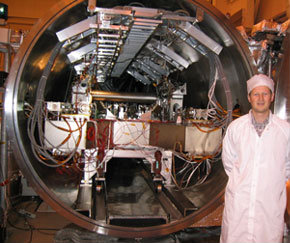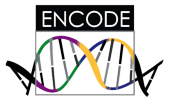Related Research Articles

Bioinformatics is an interdisciplinary field that develops methods and software tools for understanding biological data, in particular when the data sets are large and complex. As an interdisciplinary field of science, bioinformatics combines biology, chemistry, physics, computer science, information engineering, mathematics and statistics to analyze and interpret the biological data. Bioinformatics has been used for in silico analyses of biological queries using computational and statistical techniques.

Measurement is the quantification of attributes of an object or event, which can be used to compare with other objects or events. In other words, measurement is a process of determining how large or small a physical quantity is as compared to a basic reference quantity of the same kind. The scope and application of measurement are dependent on the context and discipline. In natural sciences and engineering, measurements do not apply to nominal properties of objects or events, which is consistent with the guidelines of the International vocabulary of metrology published by the International Bureau of Weights and Measures. However, in other fields such as statistics as well as the social and behavioural sciences, measurements can have multiple levels, which would include nominal, ordinal, interval and ratio scales.
The National Institute of Standards and Technology (NIST) is a physical sciences laboratory and non-regulatory agency of the United States Department of Commerce. Its mission is to promote American innovation and industrial competitiveness. NIST's activities are organized into laboratory programs that include nanoscale science and technology, engineering, information technology, neutron research, material measurement, and physical measurement. From 1901 to 1988, the agency was named the National Bureau of Standards.
In measurement technology and metrology, calibration is the comparison of measurement values delivered by a device under test with those of a calibration standard of known accuracy. Such a standard could be another measurement device of known accuracy, a device generating the quantity to be measured such as a voltage, a sound tone, or a physical artifact, such as a meter ruler.

Metrology is the scientific study of measurement. It establishes a common understanding of units, crucial in linking human activities. Modern metrology has its roots in the French Revolution's political motivation to standardise units in France when a length standard taken from a natural source was proposed. This led to the creation of the decimal-based metric system in 1795, establishing a set of standards for other types of measurements. Several other countries adopted the metric system between 1795 and 1875; to ensure conformity between the countries, the Bureau International des Poids et Mesures (BIPM) was established by the Metre Convention. This has evolved into the International System of Units (SI) as a result of a resolution at the 11th General Conference on Weights and Measures (CGPM) in 1960.

Functional genomics is a field of molecular biology that attempts to describe gene functions and interactions. Functional genomics make use of the vast data generated by genomic and transcriptomic projects. Functional genomics focuses on the dynamic aspects such as gene transcription, translation, regulation of gene expression and protein–protein interactions, as opposed to the static aspects of the genomic information such as DNA sequence or structures. A key characteristic of functional genomics studies is their genome-wide approach to these questions, generally involving high-throughput methods rather than a more traditional "gene-by-gene" approach.

The Encyclopedia of DNA Elements (ENCODE) is a public research project which aims to identify functional elements in the human genome.
The Rat Genome Database (RGD) is a database of rat genomics, genetics, physiology and functional data, as well as data for comparative genomics between rat, human and mouse. RGD is responsible for attaching biological information to the rat genome via structured vocabulary, or ontology, annotations assigned to genes and quantitative trait loci (QTL), and for consolidating rat strain data and making it available to the research community. They are also developing a suite of tools for mining and analyzing genomic, physiologic and functional data for the rat, and comparative data for rat, mouse, human, and five other species.

George McDonald Church is an American geneticist, molecular engineer, and chemist. He is the Robert Winthrop Professor of Genetics at Harvard Medical School, Professor of Health Sciences and Technology at Harvard and MIT, and a founding member of the Wyss Institute for Biologically Inspired Engineering. As of March 2017, Church serves as a member of the Bulletin of the Atomic Scientists' Board of Sponsors.
Ronald Collé is a specialist in nuclear and radiochemistry, radionuclidic metrology, and the development of standards. He has worked at the National Institute of Standards and Technology (NIST) from 1976 to 2003 and from 2005 to present, and currently serves as a research chemist in the Radioactivity Group of the NIST Physics Laboratory.
Dimensional metrology is the science of using physical measurement equipment to quantify the physical size, form, characteristics, and relational distance from any given feature.

Certified reference materials (CRMs) are 'controls' or standards used to check the quality and metrological traceability of products, to validate analytical measurement methods, or for the calibration of instruments. A certified reference material is a particular form of measurement standard.

BioBrick parts are DNA sequences which conform to a restriction-enzyme assembly standard. These building blocks are used to design and assemble larger synthetic biological circuits from individual parts and combinations of parts with defined functions, which would then be incorporated into living cells such as Escherichia coli cells to construct new biological systems. Examples of BioBrick parts include promoters, ribosomal binding sites (RBS), coding sequences and terminators.

Nanometrology is a subfield of metrology, concerned with the science of measurement at the nanoscale level. Nanometrology has a crucial role in order to produce nanomaterials and devices with a high degree of accuracy and reliability in nanomanufacturing.
The Registry of Standard Biological Parts is a collection of genetic parts that are used in the assembly of systems and devices in synthetic biology. The registry was founded in 2003 at the Massachusetts Institute of Technology. The registry, as of 2018, contains over 20,000 parts. Recipients of the genetic parts include academic labs, established scientists, and student teams participating in the iGEM Foundation's annual synthetic biology competition.
Colorado Engineering Experiment Station, Inc. is corporation whose primary business is flow meter calibrations.
COSMIC functional size measurement is a method to measure a standard functional size of a piece of software. COSMIC is an acronym of COmmon Software Measurement International Consortium, a voluntary organization that has developed the method and is still expanding its use to more software domains.
Leonid Leon Peshkin is a scientist working at the Systems Biology Department at Harvard Medical School. Peshkin's research interests include embryology, evolution and aging.
The Global Alliance for Genomics and Health (GA4GH) is an international consortium that is developing standards for responsibly collecting, storing, analyzing, and sharing genomic data in order to enable an "internet of genomics".
References
- ↑ "Hratch G. Semerjian, National Institute of Standards and Technology, USA" (PDF). nist.gov.
- ↑ "NIST, Stanford Establish Joint Metrology Initiative - GEN". GEN. 20 May 2016.
- ↑ https://openwetware.org/wiki/The_BioBricks_Foundation:RFC OpenWetWare, The BioBricks Foundation:RFC
- ↑ GenomeWeb, Genome In A Bottle Consortium Developing New Reference Materials, Variant Call Sets
- ↑ Journal of Biomedical Engineering, Measuring the activity of BioBrick promoters using an in vivo reference standard